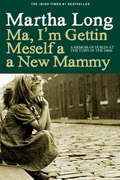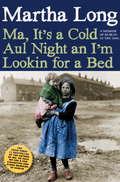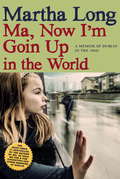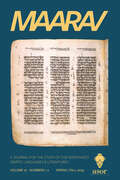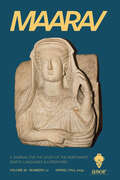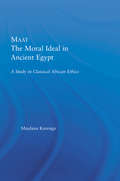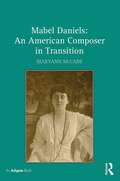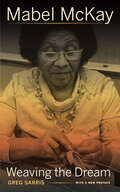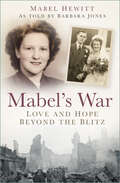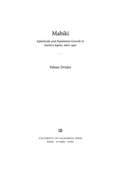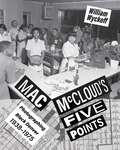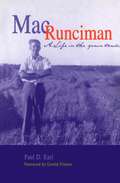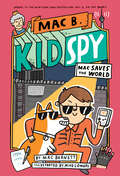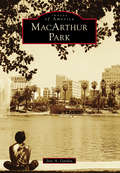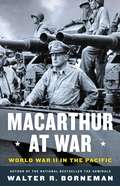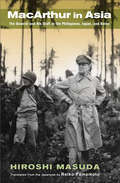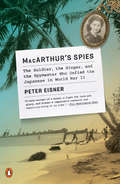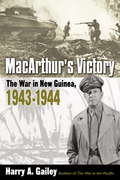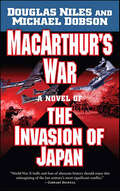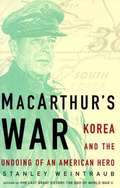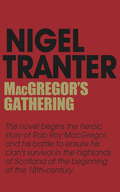- Table View
- List View
Ma, I'm Gettin Meself a New Mammy
by Martha LongAfter numerous arrests for shoplifting, Martha is sent to the convent where, the judge rules, she is to get an education. Martha is relieved to be out of the clutches of her horrible drunken stepfather, Jackser, and her feckless mother, Sally, but anxious about what awaits. Her days in the convent are steady, predictable, safe--everything that her life had not been prior to being sent away. But as she says, "You can have a full belly, but your heart can be very empty." Put to back-breaking work by the nuns, and treated cruelly by the other children--they've marked her as a "street kid"--Martha works hard, keeps to herself, and steals away when she can with a cherished book. But Martha pines for simple affection, keeping after the Sisters day after day with the hope of an arm laid across her shoulders or a tender look. When her siblings arrive at the convent--taken from their mother by the courts--Martha is thrilled to again be with family and care for the babies. But then Sally and Jackser arrive to take the children home and beg Martha to return and help care for the kids. Martha makes a wrenching decision to stay behind, knowing with an unnatural foresight for such a young girl that they will all drag her down and possibly out forever. She must find her own way. She is thirteen.
Ma, It's a Cold Aul Night an I'm Lookin for a Bed
by Martha LongThe next installment of the Ma books--all bestsellers in Ireland and the UK--brings readers on the journey of Martha's first months of freedom in Dublin after leaving the convent where she spent her early adolescence. In the latest chapter of Martha Long's autobiographical series, Martha is for the first time on her own: discharged from the convent, she's finally 16, the age she'd long dreamed of as the doorway to her freedom from the whims of cruel adults. "Life is a bowl of cherries!" she reasons as she sets out to blend in with the middle classes and find love, acceptance, and respect therein. But this is also Dublin in the 1960s, where class aspirations ain't so easy for the likes of Martha. As one job and bedsit is found (and lost), another soon comes along with its own foibles and dangers . . . but with her signature spirit and true grit, Martha makes the best of every situation and manages to offer compassion even to the most downtrodden of characters who cross her path. Chance meetings with old friends from the convent and a fortuitous (yet brief) reunion with two of her brothers remind Martha of all she has experienced (and survived) and serves as the impetus for her to keep going . . . even when homelessness is all but certain. As with her previous books, Ma, It's a Cold Aul Night an I'm Lookin for a Bed has us cheering for Martha. This time she doesn't have any nuns or abusive stepfathers preventing her from making progress . . . but life does still get in the way, and that bowl of cherries sometimes proves to be a bit more sour than Martha would hope.
Ma, Now I'm Goin Up in the World: A Memoir of Dublin in the 1960s
by Martha LongSixteen-year-old Martha's luck is finally changing. Taken in by a kind young priest, Father Ralph Fitzgerald, and his wealthy mother, she gets a taste of "how the other half lives" and resolves to make a better life for herself once and for all. Soon she's off to school to become a secretary: her ticket to a respectable middle-class existence. But even as her fortune improves--she has a roof over her head, food in her belly, and the freedom to do as she pleases--the love and community she has sought since she was a child continue to elude her. Her friendship with Father Ralph, the first person to make her feel truly special, may hold the key to her happiness. However, as their friendship becomes something more, Martha discovers that love can heal--but it can also hurt, deeply. In Ma, Now I'm Goin Up in the World, Martha navigates 1960s Ireland with her trademark compassion, optimism, and fiery strength. But will these traits be enough to see her through the greatest challenge of her life thus far?From the Hardcover edition.
Maa
by Maxim GorkiInitially published in English, this book displays the power of the common man. The book is based on some of the real incidents with Powel Blasov and his mother Nilovena. Written during the years 1905-07 this book is still popular with the readers all over the world
Maarav, volume 27 number 1-2 (Spring 2023)
by MaaravThis is volume 27 issue 1-2 of Maarav. Maarav—A Journal for the Study of the Northwest Semitic Languages and Literatures is devoted to the texts and verbal objects of the ancient Levant featuring Aramaic, Hebrew, Phoenician, and related languages. In addition to research on their verbal features, Maarav welcomes inquiry into their material, visual, and social aspects, their cultural horizons and relationships, and contemporary interests like the technological developments in decipherment, storage, representation, and analysis and the history and current practices of acquiring and interpreting ancient objects.
Maarav, volume 28 number 1-2 (Spring 2024)
by MaaravThis is volume 28 issue 1-2 of Maarav. Maarav—A Journal for the Study of the Northwest Semitic Languages and Literatures is devoted to the texts and verbal objects of the ancient Levant featuring Aramaic, Hebrew, Phoenician, and related languages. In addition to research on their verbal features, Maarav welcomes inquiry into their material, visual, and social aspects, their cultural horizons and relationships, and contemporary interests like the technological developments in decipherment, storage, representation, and analysis and the history and current practices of acquiring and interpreting ancient objects.
Maat, The Moral Ideal in Ancient Egypt: A Study in Classical African Ethics (African Studies)
by Maulana KarengaFirst published in 2004. Routledge is an imprint of Taylor & Francis, an informa company.
Mabel Daniels: An American Composer In Transition
by Maryann McCabeMabel Daniels (1877–1971): An American Composer in Transition assesses Daniels within the context of American music of the first half of the twentieth century. Daniels wrote fresh sounding works that were performed by renowned orchestras and ensembles during her lifetime but her works have only recently begun to be performed again. The book explains why works by Daniels and other women composers fell out of favor and argues for their performance today. This study of Daniels’s life and works evinces transition in women’s roles in composition, the professionalization of women composers, and the role that Daniels played in the institutionalization of American art music. Daniels’s dual role as a patron-composer is unique and expressive of her transitional status.
Mabel McKay
by Greg SarrisA world-renowned Pomo basket weaver and medicine woman, Mabel McKay expressed her genius through her celebrated baskets, her Dreams, her cures, and the stories with which she kept her culture alive. She spent her life teaching others how the spirit speaks through the Dream, how the spirit heals, and how the spirit demands to be heard. Greg Sarris weaves together stories from Mabel McKay's life with an account of how he tried, and she resisted, telling her story straight--the white people's way. Sarris, an Indian of mixed-blood heritage, finds his own story in his search for Mabel McKay's. Beautifully narrated, Weaving the Dream initiates the reader into Pomo culture and demonstrates how a woman who worked most of her life in a cannery could become a great healer and an artist whose baskets were collected by the Smithsonian. Hearing Mabel McKay's life story, we see that distinctions between material and spiritual and between mundane and magical disappear. What remains is a timeless way of healing, of making art, and of being in the world. Sarris's new preface, written expressly for this edition, meditates on Mabel McKay's enduring legacy and the continued importance of her teachings.
Mabel McKay: Weaving the Dream
by Greg SarrisA world-renowned Pomo basket weaver and medicine woman, Mabel McKay expressed her genius through her celebrated baskets, her Dreams, her cures, and the stories with which she kept her culture alive. She spent her life teaching others how the spirit speaks through the Dream, how the spirit heals, and how the spirit demands to be heard.Greg Sarris weaves together stories from Mabel McKay's life with an account of how he tried, and she resisted, telling her story straight—the white people's way. Sarris, an Indian of mixed-blood heritage, finds his own story in his search for Mabel McKay's. Beautifully narrated, Weaving the Dream initiates the reader into Pomo culture and demonstrates how a woman who worked most of her life in a cannery could become a great healer and an artist whose baskets were collected by the Smithsonian.Hearing Mabel McKay's life story, we see that distinctions between material and spiritual and between mundane and magical disappear. What remains is a timeless way of healing, of making art, and of being in the world. Sarris’s new preface, written expressly for this edition, meditates on Mabel McKay’s enduring legacy and the continued importance of her teachings.
Mabel's War: Love and Hope Beyond the Blitz
by Barbara Jones Mabel HewittWith devastating clarity and gentle humour, Mabel Hewitt takes us through her extraordinary life, from her childhood in the shadow of the First World War right up to the present day. Born in the tumultuous thirties, when the threat of the poorhouse hung over working families, she was just 10 years old when war clouds began to gather across Europe. She remembers air-raid sirens, taking shelter underground with her mother and sisters, and the utterly terrifying Coventry Blitz, when almost two-thirds of the city was destroyed or damaged.And yet, despite everything, her spirit shines through. Mabel’s War is a poignant account of love and hope during some of the country’s darkest days.
Mabiki
by Fabian DrixlerThis book tells the story of a society reversing deeply held worldviews and revolutionizing its demography. In parts of eighteenth-century Japan, couples raised only two or three children. As villages shrank and domain headcounts dwindled, posters of child-murdering she-devils began to appear, and governments offered to pay their subjects to have more children. In these pages, the long conflict over the meaning of infanticide comes to life once again. Those who killed babies saw themselves as responsible parents to their chosen children. Those who opposed infanticide redrew the boundaries of humanity so as to encompass newborn infants and exclude those who would not raise them. In Eastern Japan, the focus of this book, population growth resumed in the nineteenth century. According to its village registers, more and more parents reared all their children. Others persisted in the old ways, leaving traces of hundreds of thousands of infanticides in the statistics of the modern Japanese state. Nonetheless, by 1925, total fertility rates approached six children per women in the very lands where raising four had once been considered profligate. This reverse fertility transition suggests that the demographic history of the world is more interesting than paradigms of unidirectional change would have us believe, and that the future of fertility and population growth may yet hold many surprises.
Mac McCloud's Five Points: Photographing Black Denver, 1938–1975
by William WyckoffThis stunning collection of images celebrates the remarkable career of Burnis “Mac” McCloud, Denver’s premiere Black photographer between 1950 and 1980. His remarkable photographs, focused on Denver’s Five Points community, captured the ordinary lives of African Americans during a period that witnessed the end of Jim Crow segregation and the beginning of the Civil Rights era.Assembled from more than one hundred thousand negatives that McCloud left behind, this collection introduces his creative work to the world beyond the Mile High City. Author William Wyckoff also tells McCloud’s life story, revealing the challenges to and vitality of Denver’s Black community. At a time when much of what McCloud photographed is being swept away by gentrification and urban change, this collection of images preserves a time and place important not only for Denver but for all of Black America.
Mac Runciman: A Life in the Grain Trade
by Paul D. EarlOne of the most turbulent periods in the history of prairie agriculture is chronicled in a new book about the life and times of Alexander "Mac" Runciman, the Saskatchewan farmer who led the United Grain Growers as president from 1961 to 1981. Mac Runciman earned the respect and admiration on both sides of the great agriculture debates of the 1960s and 1970sófrom individual farmers to Pierre Trudeau, who offered Runciman a cabinet post in 1980 (Mac turned him down).Mac Runciman: A Life in the Grain Trade tells the story of how Runciman rose through the ranks of the UGG to play a central role in the fierce debates over the modernization of grain handling, subsidized freight rates, and the role of The Canadian Wheat Board. Runciman's reminiscences give new insights into the events and personalities of that critical period in Canadian agricultural history, a time in which the rural community began to question highly centralized and regulated marketing and transportation systems. The events and decisions of those years continue to reverberate in today's controversies over grain marketing and grain transportation.
Mac Saves the World (Mac B., Kid Spy)
by Mac BarnettMac B. is on another secret mission in this totally true kid spy adventure from New York Times bestselling author, Mac Barnett!The Queen of England calls on her trusty spy, Mac B., once again. This time, Mac must navigate secret tunnels beneath the Berlin Wall in order to retrieve cheat codes from a Soviet scientist. Floppy disk in hand, our hero finds himself trapped in East Germany, stuck between the wall and the Stasi. How will he escape? Well it is 1989, and walls do fall down.
MacArthur Park
by Jose A. GardeaKnown as Westlake Park for its first 60 years, MacArthur Park is considered one of Los Angeles's original parks. Throughout its history, it has endured countless challenges as the neighborhood and city that surround it grew to become the current metropolis. Born out of progressive vision and drought, MacArthur Park, due to its elegant design and cultural programming, has been referred as a "civic jewel" and the West Coast version of Central Park. Like many urban parks, it has also been burdened with a negative image due to its many decades of neglect, crime, and municipal disinvestment. Today, MacArthur Park has survived as a critical green and cultural space for one of the most densely populated neighborhoods in the country. More importantly, MacArthur Park has served as an authentic democratic space for local stakeholders and visitors to gather, play, and protest.
MacArthur at War: World War II in the Pacific
by Walter R. BornemanThe definitive account of General Douglas MacArthur's rise during World War II, from the author of the bestseller The Admirals.World War II changed the course of history. Douglas MacArthur changed the course of World War II. MACARTHUR AT WAR will go deeper into this transformative period of his life than previous biographies, drilling into the military strategy that Walter R. Borneman is so skilled at conveying, and exploring how personality and ego translate into military successes and failures.Architect of stunning triumphs and inexplicable defeats, General MacArthur is the most intriguing military leader of the twentieth century. There was never any middle ground with MacArthur. This in-depth study of the most critical period of his career shows how MacArthur's influence spread far beyond the war-torn Pacific.
MacArthur in Asia: The General and His Staff in the Philippines, Japan, and Korea
by Hiroshi Masuda Reiko YamamotoGeneral Douglas MacArthur's storied career is inextricably linked to Asia. His father, Arthur, served as Military Governor of the Philippines while Douglas was a student at West Point, and the younger MacArthur would serve several tours of duty in that country over the next four decades, becoming friends with several influential Filipinos, including the country's future president, Emanuel L. Quezon. In 1935, he became Quezon's military advisor, a post he held after retiring from the U.S. Army and at the time of Japan's invasion of 1941. As Supreme Commander for the Southwest Pacific, MacArthur led American forces throughout the Pacific War. He officially accepted Japan's surrender in 1945 and would later oversee the Allied occupation of Japan from 1945 to 1951. He then led the UN Command in the Korean War from 1950 to 1951, until he was dismissed from his post by President Truman.In MacArthur in Asia, the distinguished Japanese historian Hiroshi Masuda offers a new perspective on the American icon, focusing on his experiences in the Philippines, Japan, and Korea and highlighting the importance of the general's staff-the famous "Bataan Boys" who served alongside MacArthur throughout the Asian arc of his career-to both MacArthur's and the region's history. First published to wide acclaim in Japanese in 2009 and translated into English for the first time, this book uses a wide range of sources-American and Japanese, official records and oral histories-to present a complex view of MacArthur, one that illuminates his military decisions during the Pacific campaign and his administration of the Japanese Occupation.
MacArthur's Papua New Guinea Offensive, 1942–1943 (Images of War)
by Jon Diamond Dr.&“A compelling chronicle of the Battle of Papua New Guinea with rarely viewed images from World War II . . . an excellent book.&” —Naval Historical Foundation The Japanese seizure of Rabaul on New Britain in January 1942 directly threatened Northern Australia and, as a result, General Douglas MacArthur took command of the Southwest Pacific Area. In July 1942, the Japanese attacked south across the Owen Stanley mountain range. Thanks to the hasty deployment of Australian militiamen and veteran Imperial Force troops the Japanese were halted at Ioribaiwa Ridge just 27 miles from Port Moresby. MacArthur&’s priority was to regain Northeast New Guinea and New Britain. The capture of airfields at Buna and reoccupation of Gona and Sanananda Point were prerequisites. The Allied offensive opened on 16 November 1942 with Australian infantrymen and light tanks alongside the US 32nd Infantry Division. Overcoming the Japanese and the inhospitable terrain in tropical conditions proved the toughest of challenges. It remains an achievement of the highest order that the campaign ended successfully on 22 January 1943. This account with its clear text and superb imagery is a worthy tribute to those who fought and, all too often, died there.&“Covers a seriously neglected key campaign of WWII. Most Highly Recommended.&” —Firetrench&“A fascinating look at real jungle warfare and the images only accentuate how miserable troops must have been during the fighting.&” —ModelingMadness.com
MacArthur's Spies: The Soldier, the Singer, and the Spymaster Who Defied the Japanese in World War II
by Peter Eisner"MacArthur's Spies reads like Casablanca set in the Pacific, filled with brave and daring characters caught up in the intrigue of war—and the best part is that it's all true!" —Tom Maier, author of Masters of SexA thrilling story of espionage, daring and deception set in the exotic landscape of occupied Manila during World War II. On January 2, 1942, Japanese troops marched into Manila unopposed by U.S. forces. Manila was a strategic port, a romantic American outpost and a jewel of a city. Tokyo saw its conquest of the Philippines as the key in its plan to control all of Asia, including Australia. Thousands of soldiers surrendered and were sent on the notorious eighty-mile Bataan Death March. But thousands of other Filipinos and Americans refused to surrender and hid in the Luzon hills above Bataan and Manila. MacArthur's Spies is the story of three of them, and how they successfully foiled the Japanese for more than two years, sabotaging Japanese efforts and preparing the way for MacArthur’s return. From a jungle hideout, Colonel John Boone, an enlisted American soldier, led an insurgent force of Filipino fighters who infiltrated Manila as workers and servants to stage demolitions and attacks. “Chick” Parsons, an American businessman, polo player, and expatriate in Manila, was also a U.S. Navy intelligence officer. He escaped in the guise of a Panamanian diplomat, and returned as MacArthur’s spymaster, coordinating the guerrilla efforts with the planned Allied invasion. And, finally, there was Claire Phillips, an itinerant American torch singer with many names and almost as many husbands. Her nightclub in Manila served as a cover for supplying food to Americans in the hills and to thousands of prisoners of war. She and the men and women who worked with her gathered information from the collaborating Filipino businessmen; the homesick, English-speaking Japanese officers; and the spies who mingled in the crowd. Readers of Alan Furst and Ben Macintyre—and anyone who loves Casablanca—will relish this true tale of heroism when it counted the most.
MacArthur's Victory: The War in New Guinea, 1943-1944
by Harry A. GaileyA GREAT WARRIOR AT THE PEAK OF HIS POWERS. In March 1942, General Douglas MacArthur faced an enemy who, in the space of a few months, captured Malaya, Burma, the Philippines, the Dutch East Indies, and, from their base at Raubaul in New Britain, threatened Australia. Upon his retreat to Australia, MacArthur hoped to find enough men and matériel for a quick offensive against the Japanese. Instead, he had available to him only a small and shattered air force, inadequate naval support, and an army made up almost entirely of untried reservists. Here is one of history's most controversial commanders battling his own superiors for enough supplies, since President Roosevelt favored the European Theater; butting heads with the Navy, which opposed his initiatives; and on his way to making good his promise of liberating the Philippines. In the battles for Buna, Lae, and Port Moresby, the capture of Finschhafen, and other major actions, he would prove his critics wrong and burnish an image of greatness that would last through the Korean War. This was the "other" Pacific War: the one MacArthur fought in New Guinea and, against all odds and most predictions, decisively won.
MacArthur's War: A Novel of the Invasion of Japan
by Douglas Niles Michael DobsonJust as Fox on the Rhine and Fox at the Front showed readers an alternate Europe in which Hitler had been killed, thereby radically changing the course of World War II, Douglas Niles and Michael Dobson bring us the Battle of Midway with a very different outcome. The Allies are wildly out maneuvered and sent home in disgrace. Back in the States things are looking rather grim as the ultra-secret Manhattan Project runs into snafus that greatly delay the final production of the atomic bomb.President Roosevelt's approval ratings drop dramatically. Congress is desperate and the country cries out for a hero. That hero might just be Douglas MacArthur, who vowed that he would return to his beloved Philippines. He plans to do so with the backing of the entire US Armed Forces.MacArthur's plan of action is simple: take the war back to the Japanese, island by bloody island, until standing on the shores of Japan, he can proclaim victory.And possibly gain the leadership of the United States as well.At the Publisher's request, this title is being sold without Digital Rights Management Software (DRM) applied.
MacArthur's War: Korea and the Undoing of an American Hero
by Stanley WeintraubA careful analysis of the events which led up to General MacArthur's removal from command.
MacGregor's Gathering: MacGregor Trilogy 1
by Nigel TranterAt the beginning of the eighteenth century, one of the most exciting and romantic periods of British history, the famous Rob Roy MacGregor and his gallant nephew Gregor, a fierce young Highlander loyal to the cause, led the MacGregor clan into battle against the English Army. Outlawed and landless, they still clung to Glengyle, one small remaining corner of their ancient territories, and held fast in their loyalty to the Stuart King over the water. But in the midst of the political struggle young Gregor still managed to find time to pay court to Mary Hamilton, a lovely girl who at first rejected his rough Highland ways... 'Through his imaginative dialogue, he provides a voice for Scotland's heroes' Scotland on Sunday
MacGregor's Gathering: MacGregor Trilogy 1 (The\macgregor Trilogy #Bk. 1)
by Nigel TranterAt the beginning of the eighteenth century, one of the most exciting and romantic periods of British history, the famous Rob Roy MacGregor and his gallant nephew Gregor, a fierce young Highlander loyal to the cause, led the MacGregor clan into battle against the English Army. Outlawed and landless, they still clung to Glengyle, one small remaining corner of their ancient territories, and held fast in their loyalty to the Stuart King over the water. But in the midst of the political struggle young Gregor still managed to find time to pay court to Mary Hamilton, a lovely girl who at first rejected his rough Highland ways... 'Through his imaginative dialogue, he provides a voice for Scotland's heroes' Scotland on Sunday
